Ballybrittas, Co Laois
With just 10mm of rain having fallen over the past few weeks in Ballybrittas, crops would benefit from a small amount of moisture, explains Paul. The cool, hard windy weather meant crops were at a standstill for weeks.
Paul says the average daytime humidity was at around 60% and given the lack of moisture, fertiliser granules were visible on the surface for some time. This meant crops were looking hungry, but rain last week coupled with high temperatures and sunshine, helped the green to return to the canopy once again.

Paul O’Connell spraying a T2 on his Costello winter wheat using a John Deere 740 sprayer.
There appears to be a small amount of BYDV present in some winter barley. Most of these crops were sprayed early November. Some of his Bazooka hybrid barley was dressed with Redigo Deter and didn’t receive an aphicide. It is also showing some signs of BYDV. Paul thinks the fields which have infected crops may be more prone to BYDV in general, as they are either sheltered, close to a river or to grassy banks.
Two weeks ago, most of the barley crops received a T1 of Zephyr (0.75l/ha), Tempo (0.15l/ha) and Corbel (0.4l/ha). His Bazooka received Tempo (0.25l/ha), Bravo (1.0l/ha) and Az-tec (0.5l/ha). The crop has been brought up to 190kg N/ha using CAN bought in bulk.
Paul runs a Bogballe M2W spreader with GPS section control. Using Trimble GPS systems which use the EGNOS satellite network, he avails of full section control to limit overlaps and allow for comfortable night-time application.
His winter wheat is between GS30 and GS32 and last week was topped up to 180kg N/ha.
The crop is largely in good condition, although there is an amount of yellow rust present in his Bennington crop, an uncommon disease for him. The variety scores six for varietal resistance to the disease in the 2019 winter cereal recommended list.
The crop received Opera (1.0l/ha), CCC (1.75l.ha) and Bravo (1.0l/ha) two weeks ago, while the rest of the crops received the latter two only. He’ll be applying a T2 of Adexar (1.8 l/ha) and Bravo (1.0l.ha) later this week.
New Ross,
Co Wexford
When 50mm of rain fell on Vivion’s farm early last week, potato planting came to a halt. Planting started on 11 April in great conditions. He generally ploughs and grubs first before rotavating and ridging. Some of this work is done by a contractor, but he de-stones with a Grimme de-stoner and plants using a 32B planter himself.
Prior to planting, he spread 1.4t of a purpose-blended compound (10:9:21 and 27% N) on to the seedbed. He planted around half of his Rooster crop before the weather broke. His seed is supplied through IPM for O’Sheas Farms of Piltown and was sown at a spacing of 41cm.
After the good weekend, planting has recommenced but ground is slow to dry. He’s aiming to finish the remaining 4ac in a field before the rain arrives.

Vivion Tubritt rotavating, ridging, destoning and planting Rooster main crop potatoes.
Spring cereal sowing began on 28 March and was completed in the first week of April. All of these crops are up and are doing very well, explains Vivion. He sowed Laurette spring malting barley for Boortmalt at 180kg/ha using his New Holland 6080 with a DA accord drill and a Rabe power harrow. The TGW of all of the seed was 48g.
Around 370kg/ha of 10:8:25 was spread on the seedbed prior to sowing and the crop was brought up to 150kg N/ha last week.
Last week his winter barley received a T2 of Terpal (1.25l/ha), Bravo (1.0l/ha) and Mandarin (0.15l/ha) while the 6 row hybrids received Terpal (1.25l/ha) and Perseo (1.5l/ha). His Craft winter barley received Siltra (0.6l/ha), Bravo (1.0l/ha) and Moddus (0.15l/ha) but there appears to be some BYDV present in the malt crop.
All crops were brought up to 200kg N/ha.
He is very happy with his winter oats which was brought up to 140kg N/ha four weeks ago. Three weeks ago, it received Medax Max (0.5l/ha), CCC (0.5l/ha) and Comet (0.5l/ha) and the crop is very clean.
His winter wheat has been slow to develop and remains around GS33. This week it will be brought up to 225kg N/ha. Last week it received Optimus (0.2l/ha), Comet (0.5l/ha), Nutri-Phite (1.0l/ha) and Bravo (1.0l/ha).
Eyrecourt, Co Galway
Galway also escaped the worst of the rain over the past number of weeks, although the 26.4mm which have fallen slowed down ground work last week.
Chris finished ploughing land for beet last week and drilled 90ac over the weekend. This year he’s growing the sugar beet variety Alisha to feed his own cattle.
“The variety looks like it can compete with Magnum,” he explains. To test the variety out, he’s planning to lifting one field early and another late. He’s also sowing Enermax and Magnum.
Sowing on the flat, he uses a 12-row Stanhey web drill on 50cm drill widths to sow 100,000 seeds/ha.
He has also fitted eight tines on the drill, which follow the path of the tractor tyres to rip the ground before drilling.
All beet ground received either 25t/ha of manure or 12,000 gallons/ha of slurry. Depending on soil type, he’s also applied up to 1t/ha of 10:5:25+S+B+Mn.
Chris finished sowing spring crops two weeks ago. At the start of April, he sowed Quintas spring wheat at 200kg/ha, which will be whole-cropped later in the year. The crop has been slow to emerge. He then moved on to his 90ac of spring barley and sowed Gangway and Limona at 200kg/ha.
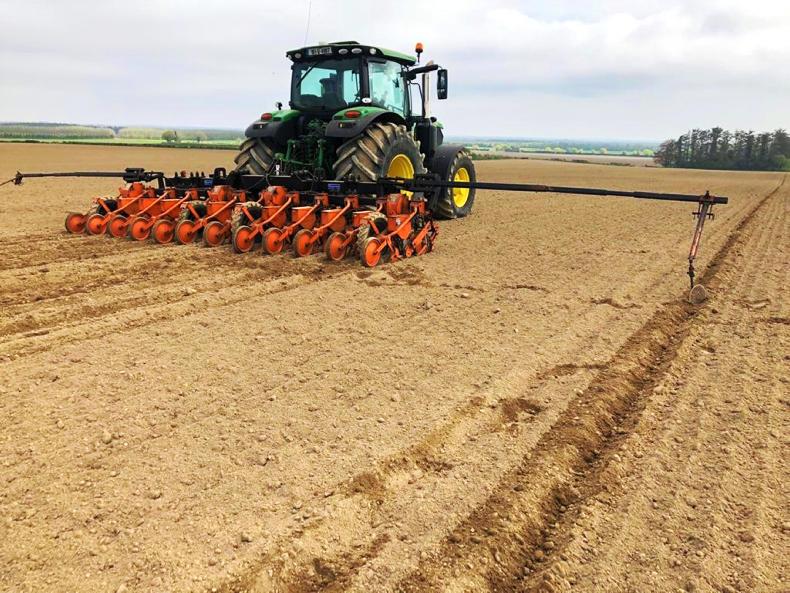
Chris Bourns drilling Alisha sugar beet at the weekend. Ground conditions were perfect.
He first broadcast 370kg/ha of 10:5:25 on to ploughed ground before drilling with his 3m mounted Lemken Saphir box drill with HE VA front-mounted press.
He his spring wheat up to 125kg N/ha and his barley up to 100 kg N/ha a the weekend.
As reported in last month’s From the Tramlines, Chris applied a T0 on to his winter barley. However, the spray, combined with low temperatures and harsh weather, was hard on the crop. Good temperatures over the weekend have helped crop growth however, and this week it will receive its T1 spray. The crop will be brought up to 200kg N/ha this week.
His winter wheat will also be brought up to 200 to 225kg N/ha depending on the ground. The crop is looking well and is due its T1 spray this week.
Read more
Farmers voice anger over Boortmalt seed contract changes
Red clover generates conventional interest at Summerhill organic walk
Ballybrittas, Co Laois
With just 10mm of rain having fallen over the past few weeks in Ballybrittas, crops would benefit from a small amount of moisture, explains Paul. The cool, hard windy weather meant crops were at a standstill for weeks.
Paul says the average daytime humidity was at around 60% and given the lack of moisture, fertiliser granules were visible on the surface for some time. This meant crops were looking hungry, but rain last week coupled with high temperatures and sunshine, helped the green to return to the canopy once again.

Paul O’Connell spraying a T2 on his Costello winter wheat using a John Deere 740 sprayer.
There appears to be a small amount of BYDV present in some winter barley. Most of these crops were sprayed early November. Some of his Bazooka hybrid barley was dressed with Redigo Deter and didn’t receive an aphicide. It is also showing some signs of BYDV. Paul thinks the fields which have infected crops may be more prone to BYDV in general, as they are either sheltered, close to a river or to grassy banks.
Two weeks ago, most of the barley crops received a T1 of Zephyr (0.75l/ha), Tempo (0.15l/ha) and Corbel (0.4l/ha). His Bazooka received Tempo (0.25l/ha), Bravo (1.0l/ha) and Az-tec (0.5l/ha). The crop has been brought up to 190kg N/ha using CAN bought in bulk.
Paul runs a Bogballe M2W spreader with GPS section control. Using Trimble GPS systems which use the EGNOS satellite network, he avails of full section control to limit overlaps and allow for comfortable night-time application.
His winter wheat is between GS30 and GS32 and last week was topped up to 180kg N/ha.
The crop is largely in good condition, although there is an amount of yellow rust present in his Bennington crop, an uncommon disease for him. The variety scores six for varietal resistance to the disease in the 2019 winter cereal recommended list.
The crop received Opera (1.0l/ha), CCC (1.75l.ha) and Bravo (1.0l/ha) two weeks ago, while the rest of the crops received the latter two only. He’ll be applying a T2 of Adexar (1.8 l/ha) and Bravo (1.0l.ha) later this week.
New Ross,
Co Wexford
When 50mm of rain fell on Vivion’s farm early last week, potato planting came to a halt. Planting started on 11 April in great conditions. He generally ploughs and grubs first before rotavating and ridging. Some of this work is done by a contractor, but he de-stones with a Grimme de-stoner and plants using a 32B planter himself.
Prior to planting, he spread 1.4t of a purpose-blended compound (10:9:21 and 27% N) on to the seedbed. He planted around half of his Rooster crop before the weather broke. His seed is supplied through IPM for O’Sheas Farms of Piltown and was sown at a spacing of 41cm.
After the good weekend, planting has recommenced but ground is slow to dry. He’s aiming to finish the remaining 4ac in a field before the rain arrives.

Vivion Tubritt rotavating, ridging, destoning and planting Rooster main crop potatoes.
Spring cereal sowing began on 28 March and was completed in the first week of April. All of these crops are up and are doing very well, explains Vivion. He sowed Laurette spring malting barley for Boortmalt at 180kg/ha using his New Holland 6080 with a DA accord drill and a Rabe power harrow. The TGW of all of the seed was 48g.
Around 370kg/ha of 10:8:25 was spread on the seedbed prior to sowing and the crop was brought up to 150kg N/ha last week.
Last week his winter barley received a T2 of Terpal (1.25l/ha), Bravo (1.0l/ha) and Mandarin (0.15l/ha) while the 6 row hybrids received Terpal (1.25l/ha) and Perseo (1.5l/ha). His Craft winter barley received Siltra (0.6l/ha), Bravo (1.0l/ha) and Moddus (0.15l/ha) but there appears to be some BYDV present in the malt crop.
All crops were brought up to 200kg N/ha.
He is very happy with his winter oats which was brought up to 140kg N/ha four weeks ago. Three weeks ago, it received Medax Max (0.5l/ha), CCC (0.5l/ha) and Comet (0.5l/ha) and the crop is very clean.
His winter wheat has been slow to develop and remains around GS33. This week it will be brought up to 225kg N/ha. Last week it received Optimus (0.2l/ha), Comet (0.5l/ha), Nutri-Phite (1.0l/ha) and Bravo (1.0l/ha).
Eyrecourt, Co Galway
Galway also escaped the worst of the rain over the past number of weeks, although the 26.4mm which have fallen slowed down ground work last week.
Chris finished ploughing land for beet last week and drilled 90ac over the weekend. This year he’s growing the sugar beet variety Alisha to feed his own cattle.
“The variety looks like it can compete with Magnum,” he explains. To test the variety out, he’s planning to lifting one field early and another late. He’s also sowing Enermax and Magnum.
Sowing on the flat, he uses a 12-row Stanhey web drill on 50cm drill widths to sow 100,000 seeds/ha.
He has also fitted eight tines on the drill, which follow the path of the tractor tyres to rip the ground before drilling.
All beet ground received either 25t/ha of manure or 12,000 gallons/ha of slurry. Depending on soil type, he’s also applied up to 1t/ha of 10:5:25+S+B+Mn.
Chris finished sowing spring crops two weeks ago. At the start of April, he sowed Quintas spring wheat at 200kg/ha, which will be whole-cropped later in the year. The crop has been slow to emerge. He then moved on to his 90ac of spring barley and sowed Gangway and Limona at 200kg/ha.

Chris Bourns drilling Alisha sugar beet at the weekend. Ground conditions were perfect.
He first broadcast 370kg/ha of 10:5:25 on to ploughed ground before drilling with his 3m mounted Lemken Saphir box drill with HE VA front-mounted press.
He his spring wheat up to 125kg N/ha and his barley up to 100 kg N/ha a the weekend.
As reported in last month’s From the Tramlines, Chris applied a T0 on to his winter barley. However, the spray, combined with low temperatures and harsh weather, was hard on the crop. Good temperatures over the weekend have helped crop growth however, and this week it will receive its T1 spray. The crop will be brought up to 200kg N/ha this week.
His winter wheat will also be brought up to 200 to 225kg N/ha depending on the ground. The crop is looking well and is due its T1 spray this week.
Read more
Farmers voice anger over Boortmalt seed contract changes
Red clover generates conventional interest at Summerhill organic walk







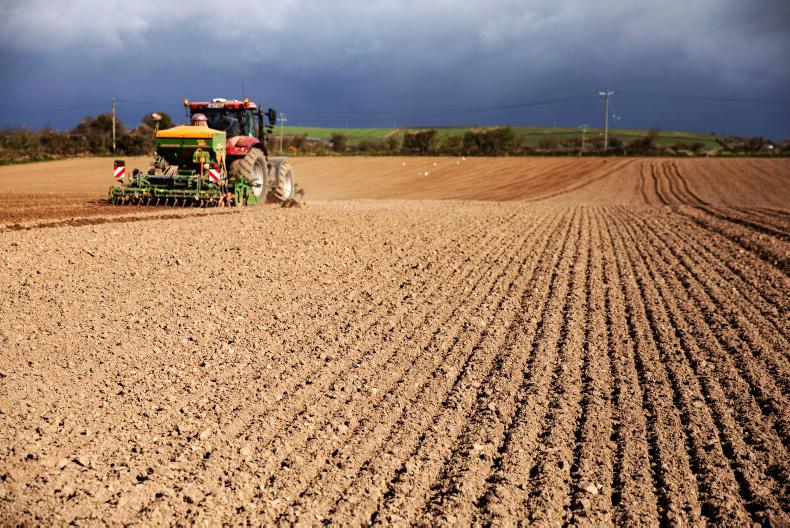
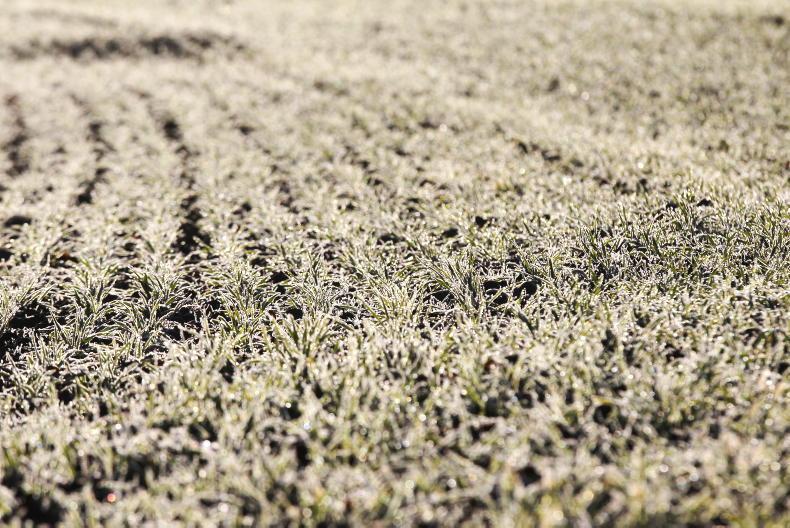

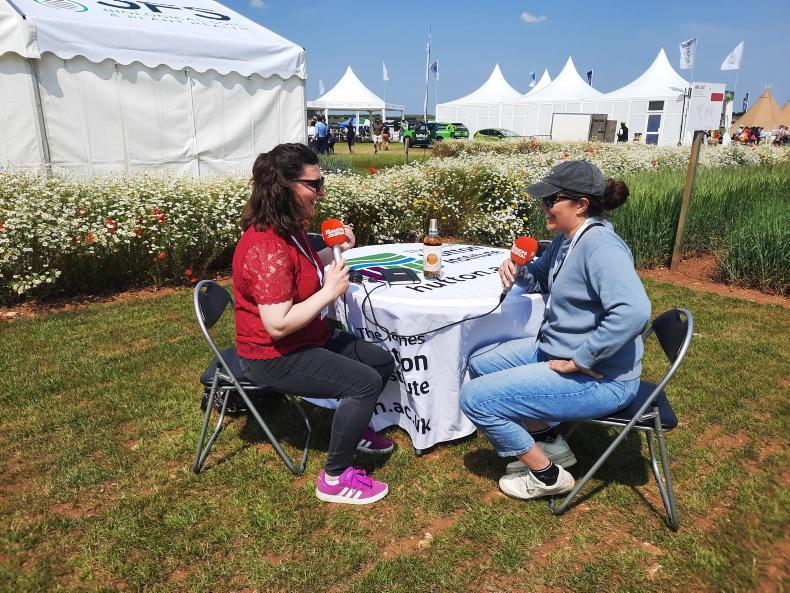
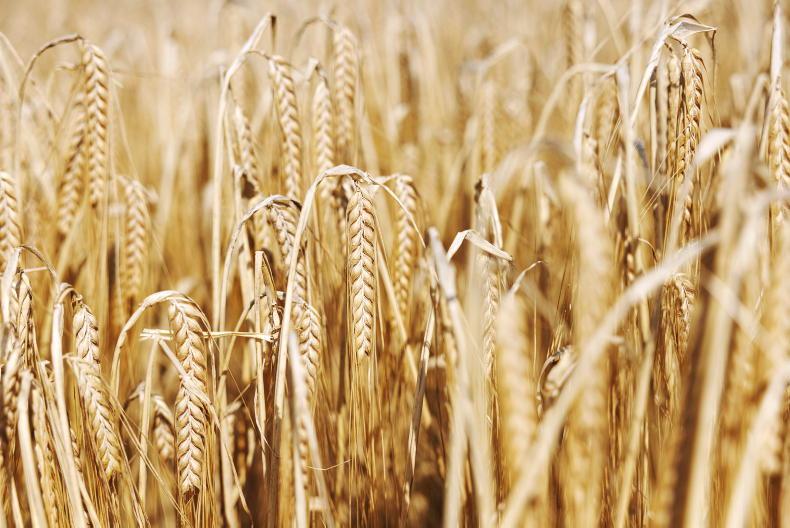
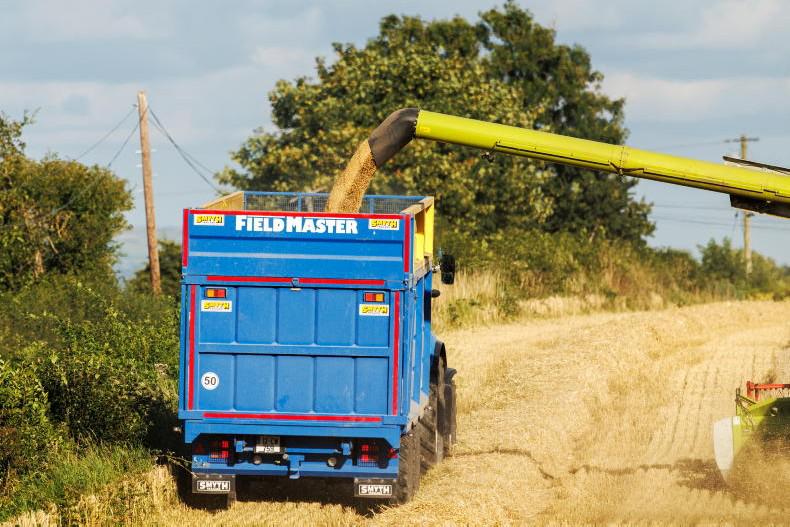
SHARING OPTIONS